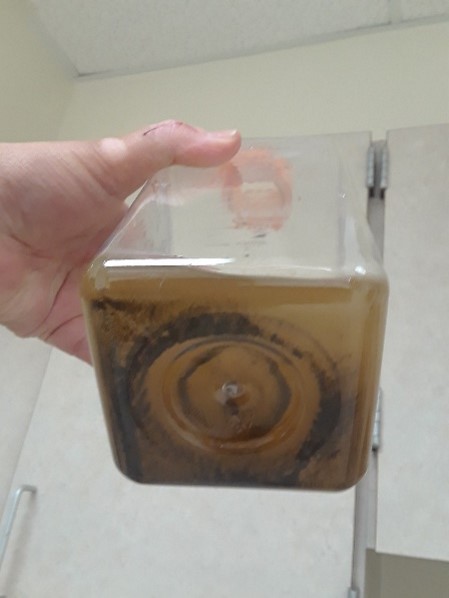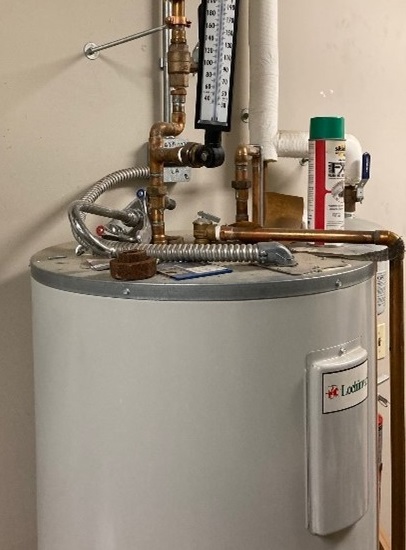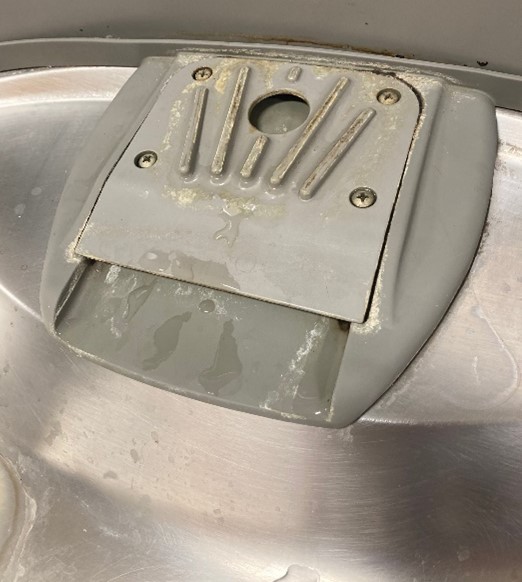Common Drinking Water Quality Issues
All water supplied to the University is thoroughly treated, disinfected, and tested by Kentucky American Water before traveling to campus through the water distribution system. This system consists of pipes and storage facilities that are maintained in order to provide an uninterrupted supply of safe drinking water from the treatment plant to the consumer. While the drinking water is deemed safe as it travels to campus, there are several issues that you may encounter from time to time. These issues may be caused by older lines in buildings, construction, general maintenance, line breaks, or weather.
Issues Commonly Reported on Campus
Discoloration

Cloudy or Milky Water: Usually the result of tiny air bubbles suspended in the water. These bubbles are so small that they are almost invisible. This gives the water a very white, cloudy appearance. If you fill a glass of water and allow it to stand for a few minutes, the air bubbles will rise to the surface. The quality of the water is not affected nor is the water harmful to consume. If the water does not clear from the bottom up, contact Environmental Management.

Brown or Yellow Water: Usually a sign of iron or rust. If the water remains discolored for only a minute or two after the tap is turned on, the building’s internal plumbing may be the culprit. If it’s only in the hot water supply, there may be an issue with the water heater. Although the presence of iron is not a health hazard (iron is an essential nutrient), it can be a nuisance. If you find the discoloration unsuitable, simply flush the tap until the water runs clear.
Water may also become discolored due to sediments getting stirred up when fire hydrants are used, construction taking place on the lines, or if there is a line break. If the water doesn’t clear up after a few minutes, contact Environmental Management.
Tastes and Odors
Often times drain odors can be perceived as the odor being present in the water. To verify if the water contains the odor, a clean glass (plastic is not recommended) should be filled with water from the suspected tap and taken away from the sink area, preferably in a different room away from the odor. Swirl the water in the glass and smell. If the odor is still present in the water, you should contact Environmental Management. Tastes and/or odors you may experience include:
Chlorine/Chemical Taste/Odor: The most commonly experienced taste and/or odor, which is caused by the addition of chlorine to the water at the treatment facility in order to kill bacteria and other organisms that can impact human health. Required by regulation, a certain level must be maintained in the distribution system to protect consumers from disease causing organisms as the water travels from the treatment plant to your building.
This taste/odor may increase at certain times during the year (usually in the Spring) as Kentucky American Water cleans their distribution system and switches disinfectants. This increase is normal and is not harmful.
Metallic Taste: A metallic taste can be caused by actual metals in the water supply, often leaching from pipes. Often times, these metals only cause taste/odor issues and are not harmful to human health. However, if this is experienced, Environmental Management should be notified so that the water can be tested to ensure that metal levels are within acceptable ranges.
Earthy/Musty Taste/Odor: Associated with changing weather conditions and algae outbreaks in the source water. Typically occurs seasonally in the spring or fall. When this happens, the treatment facility adjusts their process and monitors the issue. While harmless, the taste and smell of your water may be affected even at low concentrations.
Sulfur/Rotten Egg Odor: Caused by naturally occurring hydrogen sulfide in the water supply. This issue tends to present itself between semesters when the campus population is severely reduced and water use is decreased in buildings. The rotten egg or sulfur odor develops as water stagnates in the lines. If this odor is in the cold water only, the building’s water supply may need to be flushed. Contact Environmental Management for assistance.

* Water Heaters: Water heaters can often times be a source of tastes and odors due to the presence of the sacrificial anodes and chemical reactions that can take place over time as the anodes deteriorate. Sulfur/rotten egg odors from the hot water tap are relatively common, as is the potential of sediment and/or scale. Hot water also more readily leaches metals from the plumbing system. For these reasons it is recommended that only cold water be used to prepare food and drinks. If hot water is needed, it should be drawn from the cold water supply and heated. If you are experiencing issues with the hot water tap at your location, the building operator should be notified.
Staining

White Stains: White stains on the faucet aerator, around the sink area, or in the area where water is typically used may be the result of hard water. Hardness is the measure of the concentration of calcium and magnesium in water. These two minerals are naturally present in water and pose no health risk. Excessive hardness can cause mineral deposits to remain on surfaces after water evaporates. Hardness levels leaving the Kentucky American Water Treatment Plant that supplies water to the University average 181 ppm, indicating hard water. Hard water stains can be removed with a mixture of vinegar and water.
Pink Stains: Pink stains on or around fixtures are not a water quality issue, rather, they are caused by airborne bacteria (Serratia marcescens). This bacterium prefers areas that are moist and feeds on mineral deposits and soap scum. The pink stains can be scrubbed away and the area disinfected to kill any remaining bacteria. If you are experiencing this issue, discuss the possibility of more routine cleaning and disinfection of the affected area with your custodian.
Resources
UK Drinking Water Basic Information Summary
Kentucky American Water Taste and Odor Issues Fact Sheet
Kentucky American Water Discolored Water (Green, Blue, Black, Pink) Fact Sheet
Kentucky American Water Discolored Water (Cloudy, White, Yellow, Red, or Brown) Fact Sheet
Kentucky American Water Flushing Program Fact Sheet
Louisville Water Company Water Quality Self-Diagnostic Tool
